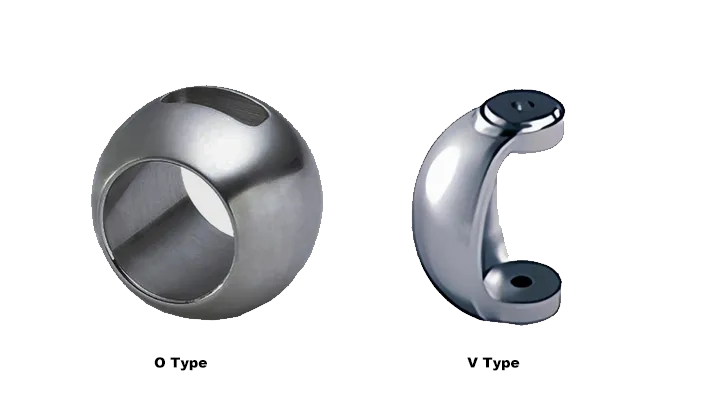Contrasts Between O-Type and V-Type Ball Valves
Ball valves come in various structures, but their basic components, such as the circular ball core, valve seat, ball, sealing ring, valve stem, and other driving devices, are similar. These valves operate by rotating the stem 90 degrees to open or close the valve, playing a crucial role in pipeline applications for shut-off, distribution, flow regulation, and altering the direction of the medium. The choice of valve seat sealing depends on the specific working conditions.
O-Type Ball Valve Structure:
Advantages of O-Type Ball Valve:

V-Type Ball Valve Structure:
Advantages of V-Type Ball Valve:
In summary, O-type ball valves and V-type ball valves differ in their internal structures and applications. O-type valves excel in scenarios with minimal fluid resistance, reliable sealing, and a swift open-close mechanism. On the other hand, V-type valves are designed for applications involving fibrous substances, providing effective shearing and self-cleaning capabilities. Both types offer distinct advantages based on specific operational requirements.
O-Type Ball Valve Structure:
- Internally, the O-type ball valve has a ball with a central through-hole.
- The ball features a through-hole with a diameter equal to the pipe diameter.
- The ball can rotate within the sealing seat, with elastic rings on both sides of the pipeline to achieve sealing.
- Rotating the ball 90° changes the direction of the through-hole, facilitating valve opening and closing.
Advantages of O-Type Ball Valve:
- Minimal fluid resistance due to a low flow resistance coefficient.
- Swift and convenient operation with a 90-degree rotation.
- Excellent sealing performance using materials like polytetrafluoroethylene (PTFE).
- Long lifespan attributed to the self-lubricating properties of PTFE.
- High reliability with minimal risk of abrasion or wear on the sealing components.

V-Type Ball Valve Structure:
- The V-type ball valve features a ball core with a V-shaped structure.
- The valve core is a 1/4 spherical shell with a V-shaped notch for enhanced flow capacity and shearing capability.
- Particularly suitable for conditions involving fluid substances with fibrous characteristics.
- Generally designed as a single-sealing ball valve, less suitable for bidirectional use.
Advantages of V-Type Ball Valve:
- V-shaped edges effectively cut through impurities during ball rotation, providing a self-cleaning feature.
- Suitable for fluids with fibrous characteristics due to the V-shaped notch.
- The flange connection allows easy disassembly without the need for special tools.
- Low operating torque and high stability due to the use of low-friction materials.
- Ideal for proportional control with a wide range of adjustability.
In summary, O-type ball valves and V-type ball valves differ in their internal structures and applications. O-type valves excel in scenarios with minimal fluid resistance, reliable sealing, and a swift open-close mechanism. On the other hand, V-type valves are designed for applications involving fibrous substances, providing effective shearing and self-cleaning capabilities. Both types offer distinct advantages based on specific operational requirements.

